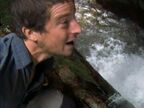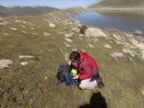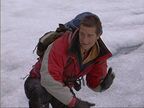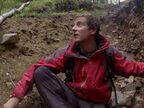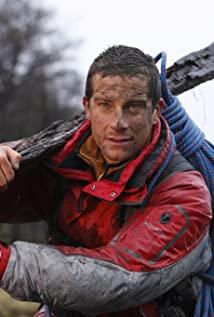1. If you get lost on Kilauea volcano, you have to try to find a way to the sea, because most Hawaiians live by the sea.
2. The ground on the volcano is full of roughness and it is very difficult to walk. Most accidents on the volcano are caused by slipping or tripping. If one fails to stand firm, it will result in a broken leg. Also watch out for cooling lava, which can collapse suddenly if you stand on it.
3. Sulfur dioxide gas is formed inside volcanoes, where its concentration is high. If you can see sulphur dioxide gas leaking out of some cracks in the ground, it means you are standing right on top of the flowing lava, and the molten lava is very close to the ground, maybe a meter or so below your feet. place. Volcanologists measure these emissions to look for signs that a volcano is about to erupt.
4. Sulfur dioxide gas is very smelly, strong and pungent, and it can be poured into the throat. When the concentration is very high, it will kill people. Be sure to use a T-shirt to make a gas mask.
5. Some of the openings on the ground can see the lava pipes underneath. Those holes are called skylights. Below them are lava flows, which pass through those so-called lava pipes. The temperature below can reach 1093 ℃. If the thin ground cracked, people would be burned to ashes in seconds. The way to go through a zone like this is to test your boots very carefully, if your boots melt, it's too hot to go. Also, you have to look out for the rocks ahead of you to start softening, if that happens your feet start to sink in and you have to step back and find another way.
6. People should be able to live for about three days without water, but it is very difficult to survive a day on such a hot volcano. The volcano's annual rainfall is around three meters, but the lava has so many holes that almost all the water seeps through. The water remaining on the surface will soon evaporate at high temperatures, and most of the rainwater that falls near the crater is polluted by sulfide gas and becomes acid rain, so few plants survive, so when the distance from the active crater is The farther you go, the more plants you see. The Kilauea Rong lava field is covered with dense rainforest, some of which are still preserved. These are called lava field buttes. They are either just outcropping vegetation or large isolated jungles. Chance to find food and water.
7. In the whole volcanic area, the biggest difficulty is that there are no creeks and rivers, so the best chance of finding water is in the jungle, finding a pothole or cave.
8. When there is no water source, you can absorb water by eating moss.
9. Water in ponds or on rocks is stagnant stagnant water, which is a breeding ground for bacteria and may also be contaminated with animal waste.
10. Drinkable fresh water can be found through old lava pipes. Old lava pipes are scattered all over Hawaii. Lava used to pass through these underground tunnels and flow from the volcano into the sea. This may be a good place for auspicious water. At this time, the standing place should be the top of the lava pipe. If it has collapsed, leaving a huge pothole, you can find a way to go down to the pothole to find water.
11. Myrtle trees are characterized by growing on the edge of potholes. Their roots are exposed and extend all the way to the ground. This is to find moisture and reach down to absorb moisture. Myrtle trees can be used to climb down the potholes. But it is full of moss and slips easily. When climbing, pay attention to distinguish which roots are alive and which are dead. Before you put your whole weight on it, try it out.
12. Even if you are thirsty, you can't drink the water you find first, because there is a lot of water in the potholes of the old lava pipes, but the water may be contaminated, because animals often fall through these skylights, really looking for The safe water deep in the cave is the water inside the lava tube itself, which is clean.
13. Before entering the depths of the cave, a torch needs to be made, which can not only illuminate, but also estimate the concentration of carbon dioxide, like a canary in a mine. One of the gases emitted by volcanoes is carbon dioxide, which is colorless and odorless, and can be fatal in high concentrations. If you encounter a cloud of carbon dioxide gas, the torch will go out, which means that you must evacuate quickly, otherwise you will suffocate.
14. Make torches: The nuts of the macadamia stone fruit tree are rich in vegetable oils and are easy to burn. Native Hawaiians call them candle nuts, and they are used for lighting at home. Once you find the macadamia nuts, use a stone to break open the hard shell, thread the pulp on a sharp wooden stick (new wood is best because it won't burn too fast), and make it like a nut skewer, this way first Light the top one and let it burn all the way down. Each macadamia nut takes about five minutes to burn, so if you put five on each skewer, it will take about half an hour.
15. Carbon dioxide suffocation is not the only dangerous factor in lava pipes. Stones are often thrown down, so the safest is to walk against these rock walls. Long ago, molten lava flowed through these tunnels, and the hot lava The rock walls were all burnt, and became like glass ceramics.
16. In the lava pipes, some tree roots can be seen penetrating directly through the ceiling of the tunnel, all of which are full of water, because the rainwater flows along the cracks in the ceiling of these lava pipes and drips down these roots. After coming down, the water is very clean and can be drunk directly, and it is the most authentic volcanic mineral water.
17. These old lava pipes are dangerous, rockslides are often found, and must be left as soon as possible, the sooner the better.
18. You can use the wind direction to navigate, the Pacific trade wind always blows in one direction, the northeast wind blows in the northern hemisphere, and the southeast wind blows in the southern hemisphere.
19. The quickest and easiest shelter to build is a single-slope shed. First of all, you need to find a flat land in the jungle. When building a shelter, one of the most important conditions is to find a good location. Before selecting a site, you should carefully check whether there are obvious animal traces on the ground (this animal trace in the film is very likely It is a wild boar, wild boars are very dangerous, they have sharp tusks, they can be very aggressive in order to protect their territory, so you can't build a shelter here). If you make your bed before building the roof, dry ferns can make a comfortable and fluffy mattress. Although the roof is your shelter, you need to rely on the mattress to keep you warm, because the ground is the most likely to lose heat. . A giant fern is an ideal cover, erected from the lowest part first and then slowly upwards, so that the rainwater will stay on the sides and not pass through the roof. Finally, put some extra ferns on the roof to keep the rain out.
20. Build a bonfire, not only to keep warm, but also to repel mosquitoes. The smoke from the campfire can ward off some mosquitoes.
21. Honey is rich in sugars, including glucose and fructose, which provide energy.
22. Many hives in Hawaii are occupied by African bees. They are more aggressive than native bees, so don't rush to get honey. The best way to appease angry bees is to use smoke. The smell of smoke will make bees return to the hive. go. How to make smoke: Take two Penglai banana leaves and some hay, put licorice on the leaves, and roll them tightly. Before lighting, you need to make a mask out of an old t-shirt, which can prevent the smoke from choking on yourself, and also prevent bees from getting into your nose, mouth or ears. Then just wrap the outermost leaves all the way to the bottom, wrap it tightly and restrict the air so that the smoke comes out and there is no open flame. Then let the smoke drift to the bees and the smell of the smoke will send the bees back to the hive so they can get the honey. One of the good things about honey is that it never goes bad, even if it's found in a pyramid, just reheat it and it will be delicious again.
23. Melting lava solidifies in different ways. The lava formed by the hot molten slag rolling down from the sides of the volcano can form unusually sharp rocks that can be easily cut, and socks can be used as gloves.
24. Bermuda long-tailed birds are sea birds, if they fly very high, it means they are flying to the sea to feed, you can follow their direction, so that you can get closer and closer to the sea.
25. There will be many cracks in the lava field, some are caused by numerous earthquake disasters, and others are lava pipes that have completely collapsed. It is very dangerous to cross these fragile lava pipes. Sometimes these lava bridges can be seen crossing, somewhat similar to the snow bridges over glacial rifts. You have to be very careful when crossing these bridges because you don't know what is solid and what is empty under your feet.
26. Hawaii is one of the most seismically active areas on earth, but the earthquakes here are not caused by the movement of the earth's plates, but due to the activity of magma inside the volcano. There are at least 20 earthquakes every day here, and earthquakes will not only open Cracks will also close the cracks, so it is not advisable to stay for a long time when walking in the cracks, but to go out as soon as possible.
27. If you see a huge cloud of smoke, this is a huge plume of smoke formed after the lava flowing in the ground rushed into the sea, indicating that it is already at the seaside. But despite being at the seaside, this is a very dangerous place. These hydrochloric acid clouds are formed by hot lava meeting seawater. It is highly corrosive. If accidentally inhaled, its toxicity can be fatal. It smells like an intruder. Catastrophe for the chemistry lab.
View more about Man vs. Wild reviews



